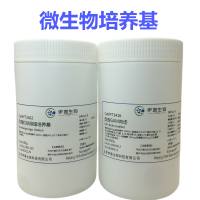A practical method for the preparation of total DNA from filamentous fungi
互联网
Most methods of DNA preparation from fungi are time-consuming due to the need to first make protoplasts, expensive for chemicals such as cesium chloride, or suitable only for small scale preparations. We have developed a simple method for total DNA preparation, yielding a product of quality suitable for restriction digestion and library construction.
To extract DNA, 0.5 to 2.0 g of fresh or frozen mycelium is ground in liquid nitrogen. The mycelial powder is divided between two Sorvall tubes each containing 15 ml of cold spermidine-SDS buffer (4 mM spermidine, 10 mM EDTA, 0.1 M NaCl, 0.5 SDS, 10 mM ß-mercaptoethanol, 40 mM Tris-HCl pH 8.0), and thoroughly shaken. The mixture is then immediately extracted with 1 vol double distilled phenol. After a second phenol extraction, the aqueous phase is extracted with 1 vol chloroform. To the resulting aqueous phase is added 10 of that volume of 3M sodium acetate pH 5.5. DNA is then precipitated by addition of 2 vols of cold absolute ethanol, and recovered either by spooling it out or by centrifugation at 10,000 x g for 10 minutes. After washing with 70 cold ethanol, the DNA is air-dried at room temperature, redissolved in TE buffer (20 mM Tris-HCl pH 7.5, 0.1 mM EDTA) to a DNA concentration circa 0.5 mg/ml and stored at -20°C. Purity and average fragment size are checked by electrophoresis.
The method is highly reproducible, and results over 70 recovery of good quality DNA (A260 /A280 circa 1.85). With optimal grinding and nuclease inhibition, the DNA is of high molecular weight (>23 kb), with minimal smear on electrophoresis. The method has been used for Neurospora crassa, Aspergillus nidulans, Dactylium dendroides and Humicola grisea . For all four species, the DNA prepared has been successfully restricted and religated. DNA from this method has been used in the construction of genomic libraries from Humicola grisea and Dactylium dendroides .








